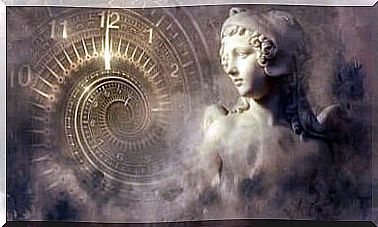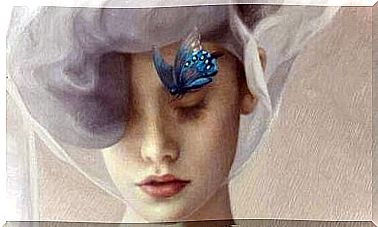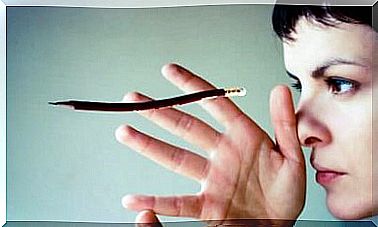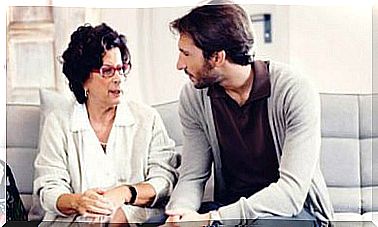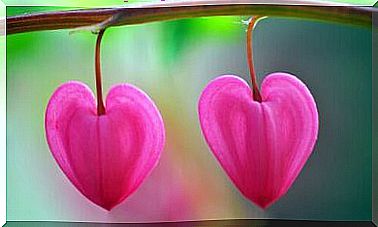The Different Types Of Introverted Behavior

What defines an introverted behavior goes far beyond the attitudes a person adopts in socializing and in life in general.
This was demonstrated by the 10-item Introversion and Extraversion Test found on Susan Cain’s website The Quiet Revolution. When examining the dimensions of introversion in the test description, we are aware that the definition of introversion has, thankfully, been updated.
Introversion research has overcome differentiation based on “I like being alone/being with people”. Also, introverted behavior can have as many or more nuances than extraverted behavior.
Thus, in the group of introverts there may be socializing preferences that are not generally available at the time; therefore, they may prefer to stay at home.
They can enjoy the company of others a lot, but in a different way than extroverts. Above all, your preference for certain activities may vary over time, just as it does for other people.

In the 1920s, Carl Gustav Jung created the introvert/extrovert distinction. Although it already exists, it began to be more commonly used in psychology from 1940 onwards.
At that time, this distinction began to be investigated especially in the field of personality. Jung also identified a third personality type, though he never categorized it.
Currently, there is the term ambiverted. He’s right in the middle of the introvert-extrovert spectrum. In a way, ambiverts have the best of both worlds, able to harness the strengths of introverts and extroverts, depending on the circumstances.
The different types of introverted behavior
Scholars such as Jonathan Cheek and Jennifer Grimes have identified different types of introverts. The first type is what will sound most familiar: social introverts.
1. Social Introverts
This is the profile that most resembles the generalized view of introversion. These are people who value reading at home more than parties.
A social introvert highly values his space and close relationships, preferring to go out drinking with his lifelong friends rather than head to Tomorrowland.
Although they can be confused with shy people, there is an essential difference. While shy people feel anxious when – or about the possibility – of being the focus of attention, social introverts feel better in smaller groups, where the level of stimulation and exchange may not be as high.
2. Introspective Introverts
Another type identified by Cheek and Grimes is what they call “introspective introverts.” This dimension places focus or attention on a more internal element or composition. Unlike social introverts, introspective introverts have no problem socializing.
This kind of introversion characterizes people with a large inner world, capable of getting lost in fantasy horizons and taking advantage of their imagination to translate it into creative works.
Professor Cheek stated that these introverts are “able to lose themselves in an inner fantasy world, but not in a neurotic way, but in an imaginative and creative way.”
An example Cheek gives is Luna Lovegood, the witch from Harry Potter. Her inner madness, which makes her mysterious and disturbed, is what would perfectly define a mental introvert.

3. The Restricted Introverts
The third type of introvert Jonathan Cheek cited is defined more by a style of doing than thinking. They are the “restricted introverts” who grade their actions or execute them at a slower pace.
Restricted or reserved introverts prefer to think before speaking or acting, and it may take longer to move forward. Professor Cheek says, “I’ve never thought of introversion this way before, so I’m interested to see what future research will tell us about restricted introversion and how it correlates with other variations.”
They take time before doing anything, plan everything they will do during the day, and like to keep the situation under control. Unlike the anxious ones, they are not insecure. They are simply people who analyze the world and put aside their impulsiveness.
4. Anxious Introverts or Social Anxiety?
Professor Cheek points to another type of introvert, the anxious introvert. They answer questions with statements such as “I feel painfully embarrassed when I’m with strangers” or “Even when I’m in a group of friends, I feel very lonely and restless.”
Faced with a profile that may seem similar, we sometimes speak of introversion and sometimes of social anxiety.
Reflections on Introversion
Introverts are people who enjoy solitude and generally have an active inner life. In addition, they take a more deliberate approach to personal growth and feel drained in overly stimulating environments.
In different people, the different components may be more or less important, but in general, they all look quite similar at these points.
What is surprising about the varieties or different components of introversion is how enriching they can be.
Extroverts have always tended to benefit from the assumption that their way of life was psychologically healthy. However, researchers like Cain and Dembling show us how varied and adaptable introverted behavior can be.
